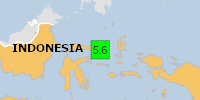RSS feed source: Global Disaster Alert and Coordination Systems (GDACS).
FRANKFORT, Ky. – FEMA understands that clean up and rebuilding after a flood can take time and be overwhelming. Guidance is available and it’s always important to put safety first.
Follow instructions from your local officials to ensure it is safe to reenter your home. You can begin the recovery process by documenting damage and taking steps to stop the spread of mold.
First, confirm the electricity and gas are shut off to avoid fire or injury. Have an electrician check the house before turning the power back on.
Document Your Flood DamageTake photos and videos of the damage, including structural and personal property on the inside and outside of your home, before discarding items. Remember to take photos of the insides of closets and cabinets.Record serial numbers of large appliances, such as washers, dryers, and refrigerators.Keep receipts of any purchases made to replace damaged property or repair property.Retain material samples of damaged items such as carpeting, wallpaper, furniture upholstery, and window treatments. The type and quality of material may impact insurance claims. Contact repair services as necessary to address damage to the building’s electrical, water, or HVAC systems. Consult your insurance adjuster or insurance company before you sign any cleaning, remediation, or maintenance agreement.
After taking photos, you should immediately throw away flooded items that pose a health risk, such as perishable food items, clothing, cushions, and pillows.
Mold and Cleanup
It
Click this link to continue reading the article on the source website.


